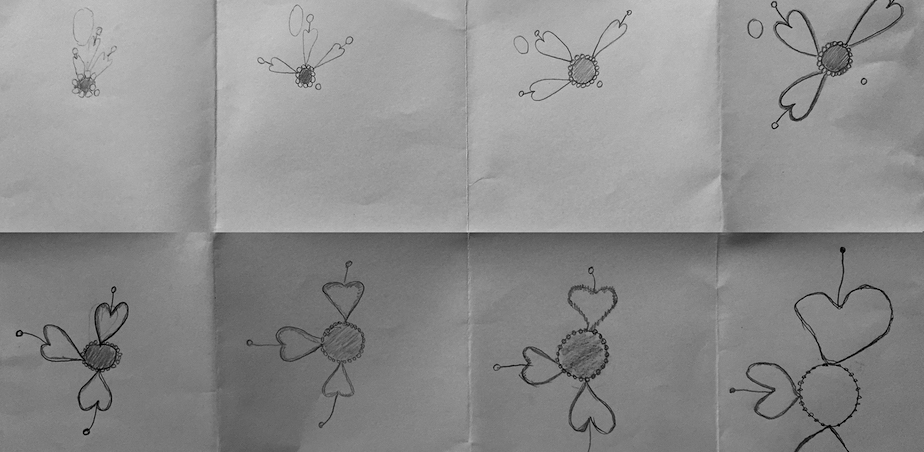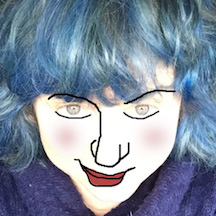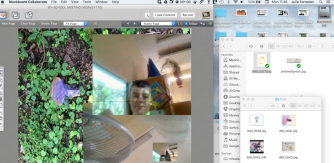Blog 3 – Julie Forrester, Visual Artist

Evolution Drawing

Julie Forrester is a visual artist based in Cork City. She has been working with all kinds of people in all kinds of settings since her return to Ireland in the 1990s. Her work celebrates process and open ended enquiry into materials and context. Julie Forrester is currently in residence with Kidsown Publishing Partnership at Killard School, Co Down.
Blog 3
As the new year unfolds into Autumn I would like to reflect on that heady time, a few short months ago, when the holidays stretched ahead and routine was being dissolved into the long days of summer.
My summer usually begins with a week of creative activity with teachers, as part of their Continuing Professional Development. This CDP Programme run by CRAFTed and the West Cork Education Centre takes place in different host primary school each year and the number of participants is 25. So teachers find themselves in a familiar setting where their roles are reversed, the tables are turned, teacher becomes pupil, and, I have found, they make this switch naturally and with gusto!
Teachers are on a giddy high at this busy time, there is a sense of release as they wind down into the summer and also sense of self evaluation and reflection as they are packing up after a year in the classroom. The CPD programme must address this ‘end of year’ dynamic and the structure and content of the programme allows for this valuable teacher time together, peer to peer, sharing ideas, catching up, meeting new friends and enjoying each other’s company. After a year of routine and responsibility, it is time to be on ‘the other side’ and a chance to allow for loosening up, and a complete freedom to adopt a “what happens?” approach. Our CPD programme allows plenty of time for interactive play while opening up opportunities for sharing, testing and evaluating individual classroom procedures and preferences. It is a place where a process of ‘discovery towards’ something is the modus operandi for all activities, where there is no such thing as a ‘here’s one I made earlier’ format to fall back on/aspire to/comply with/copy. For many teachers, who have a profound sense of responsibility, and who are expected to be in control at all times, and must who achieve measurable results across a classroom of pupils, this artist’s approach can present a daunting task and a leap into the unknown. The discovery approach involves great faith in process and requires some practice, it can meet with both enthusiasm and resistance in a classroom full of disparate personalities and performance pressures. The reward for this open ended practice is a confidence in the ability of the child to meet the challenge of the task at her own level.
So in the spirit of a new term I would like to share here one of my favourite loosening up activities for drawing. This activity comes from copying, or, more grandly put, from observation, and celebrates the capacity for invention. It is a drawing game in the spirit of an old party favourite, Chinese Whispers. In my example the source material came in the form of photographs I had collected of extinct and endangered Irish wild flowers (but the source could easily be from any other kind of ‘category’ and is ideal for focussing closely on any area of research). Each individual is invited to fold their A2 sheet into 8 sections and numbered 1 to 8 (in a room of lively teacher/pupils it quickly became evident that this was a task in itself!)
In the first section, numbered “1” they must make a drawing from their photograph. I set a time limit of 5 minutes for each drawing. Each artist then passes the sheet to the person on their right who must copy their predecessors drawing in the next section. Participants may only look at the previous drawing and must work from the information contained in that section. The drawing goes around the table and comes back to the original draughts-person.
Results are always interesting, we can see the corruption from one drawing to the next we can note changes, omissions and exaggerations and we can think about evolution, design, glitches, copying, originality, perception, imagination, preference and progression that affirm each artist’s hand in the final work. It can be the beginning for al kinds of enquiry and further artwork. This activity touches on the relationship between perfection and invention, itself a profound enquiry. There is no right or wrong and its impossible to dictate a ‘correct’ outcome. Many rules are broken. I love this activity especially because it celebrates copying – one of the cardinal sins of the child’s universe and often the bane of the teacher’s classroom! What’s more, it celebrates copying badly, turning a vice into a virtue. It celebrates collaboration and corruption and all that deviates from the original. It celebrates the original.
After this exercise drawing becomes a whole lot easier for everyone.


